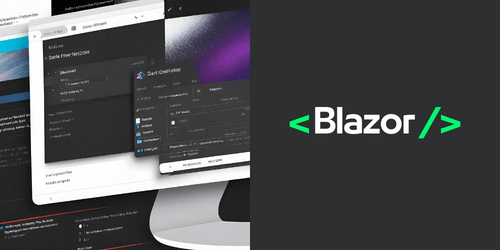Understanding .NET and .NET Core
.NET is a free, open-source development platform maintained by Microsoft and the community. It's used for many types of applications, offering a unified framework for building web, desktop, mobile, gaming, and IoT applications. .NET supports multiple languages, but C# is one of the most popular for .NET development, thanks to its versatility and object-oriented features.
.NET Core, now just referred to as .NET from version 5.0 onwards, was initially created to modernize the platform, offering cross-platform support and improved performance. It represents a significant evolution, unifying the .NET ecosystem to provide a single, optimized runtime and framework for all .NET applications. This consolidation simplifies the development process and extends .NET's capabilities across all platforms and devices.
Blazor: The New Kid on the Block
Blazor is a framework within the .NET ecosystem for building interactive client-side web UI with .NET. Before Blazor, using .NET in web development typically meant server-side coding, with client-side logic handled separately in JavaScript. Blazor changes the game by allowing developers to use C# and .NET to run code directly in the browser using WebAssembly, as well as supporting server-side processing.
Why Blazor?
- Unified Language Use: Developers can use C# across client-side and server-side, reducing the need to switch between languages for different parts of an application.
- Modern Web Development Features: Blazor supports modern web development features, including components, routing, dependency injection, and more, all within the .NET ecosystem.
- Leverage Existing .NET Libraries: With Blazor, the vast array of .NET libraries and tools are at your disposal for both client and server code, making it easier to share code and libraries.
Building Your First HelloWorld Blazor Application
Let's dive into creating a simple "HelloWorld" application using Blazor. This example will help you set up your development environment and give you a taste of Blazor's capabilities.

Prerequisites
- .NET SDK (version 8.0 or later): Download and install from the .NET website.
- A code editor: Visual Studio Code is recommended, with the C# extension installed.


Step 1: Create a New Blazor App
Open your terminal or command prompt and run the following command to create a new Blazor App project:
dotnet new blazor -o HelloWorldBlazor
This command creates a new directory named HelloWorldBlazor with a Blazor App project.




